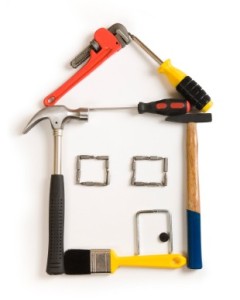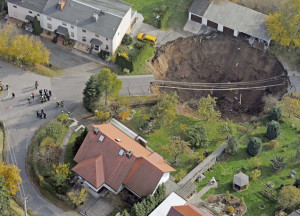Most homeowners today have at least some experience with DIY projects around the house. There are a lot of little things that happen around the house, inside or outside, and if you had to call a handy man every time a light bulb or air filter  needed to be changed you would be spending a lot of extra money that you could save if you did it yourself. If you are a homeowner and don’t feel comfortable doing any project at all I would strongly reconsidering the attempt of a DIY project especially if you are making the improvements to sell your home. There are many simple improvements that can be completed before you sell your home. The following information will get you started on the most impacting items, there is a huge amount to consider when you are making these upgrades but you have to make sure you don’t get carried away and don’t bite off more than you can chew!
needed to be changed you would be spending a lot of extra money that you could save if you did it yourself. If you are a homeowner and don’t feel comfortable doing any project at all I would strongly reconsidering the attempt of a DIY project especially if you are making the improvements to sell your home. There are many simple improvements that can be completed before you sell your home. The following information will get you started on the most impacting items, there is a huge amount to consider when you are making these upgrades but you have to make sure you don’t get carried away and don’t bite off more than you can chew!
First things first would be to consider new paint. Even if you just painted within the last couple of years it would be smart to consider a quick re-coat on the exterior and interior walls. After you finish there will be a huge improvement. Another aspect to painting is the finish and color choice. When you are painting main living areas and other bedrooms it is important (when selling) to have colors that are not out of the ordinary. The kid’s bedrooms that are ninja turtle green and princess pink are not always going to have the same appeal to the potential buyers. The idea behind the color choice is allowing the buyer to see a “clean slate”, this doesn’t mean you have to paint everything plain white but rather natural colors are ideal. Additionally, the finish choice of the paint should be taken into consideration depending on the rooms the scale for finish typically includes flat, eggshell, satin, semi-gloss and gloss and goes from most fragile and reflects no light to most durable and reflects a lot of light. Which brings me to the next DIY project, interior lighting.
Without getting into the physics behind how electrons move in a wire and how light particles flow through a room, we will keep this simple. Lighting in a house is very important, in fact most of the time you can tell when a house was built by the kind of lighting and how much was installed. I would recommend before completing any electrical work it is important to have the breaker shut off to whatever you are working on.
There are many fixtures or even bulbs that could be replaced very easily to improve the aesthetics of your home. Many bulb types and power requirements all have a new and improved bulbs and a “cleaner” whiter light. Moving onto the fixtures I would concentrate on the main living areas, kitchen and bathrooms. Many times surface mounted fixtures and ceiling fan light kits are very easy to upgrade with one mounting bracket and just a couple of wires. Again these updates can be very cost effective, allow a new look, offer a higher quality and better distribution of light.
The last item I would ask you to consider is the flooring. When trying to sell your home the most beneficial type of flooring to replace is linoleum or carpet, the nice thing is that these types of floors are SUPER easy to remove. The carpet will consist of padding and tack strips (that holds the carpet to the edge). The linoleum is usually just stuck down and can be peeled up to be thrown away. The options I would recommend as a DIY project would be wood floors, tile, or believe it or not more linoleum. They make really nice and high quality linoleum these days and if it is a small laundry room it may be a good application. Installing wood floors may scare you but they make new laminate wood floor systems that are very easy to to put in, its just a matter of snapping the boards together! Some may say that if it’s not “real” wood then it’s not worth it, but actually this new engineered wood holds up better than real hardwood. When it comes to not being sensitive to water, scratch resistant, low maintenance and cost effective the laminate wood flooring is the best choice. My thought is that the people who love the “real” hardwood floors have never cleaned, sanded and refinished them before or money is not a concern and they have no issue forking out tons of money for upkeep and maintenance.
I say for the average homeowner there may be a lot we can’t do but keep in mind we aren’t replacing a roof, windows or pouring a new driveway. A little paint, an eye for good lighting, and a day of snapping in some new flooring goes a long way when trying to sell your home.
If you happen to be in the market for a new home make sure to check out the MoveMap on MoversAtlas.com to research potential homes, neighborhoods, and their surrounding communities so you can make the best choice when making your home buying decision!



